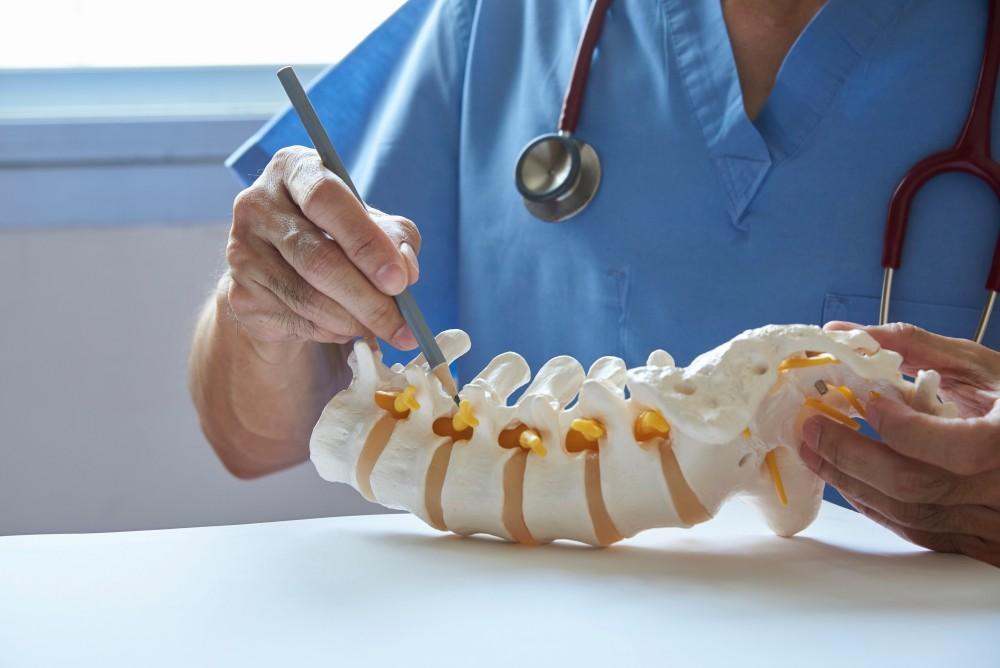
Am I a Good Candidate for Disc Replacement?

About 70-80% of people experience back pain at some point during their lives, but most don’t need surgery to improve their pain.
Surgery is generally considered only when pain doesn’t improve with conservative therapies and treatments, though not everyone who still experiences pain after exhausting nonsurgical treatments is a good candidate for surgery.
If you’re experiencing chronic back or neck pain due to a damaged disc, you may be wondering if disc replacement could be the solution. Disc replacement can be a game-changer for those who suffer from persistent pain, especially when traditional treatments like physical therapy, injections, or medication haven’t provided lasting relief.
At Vertrae®, located in Miamisburg, Ohio, board-certified neurosurgeon Dr. Kamal R. Woods and his team specialize in disc replacement for patients whose spinal pain interferes with their quality of life. In search for a relief to their chronic pain, many people ask, “What makes an excellent candidate have the procedure?” Here’s what our expert has to say.
Your spine and its discs
Your spine is a column formed by bony vertebrae held together by facet joints. In between each pair of vertebrae lie the intervertebral discs, roundish structures that cushion the vertebrae, preventing them from rubbing together. They also absorb the shock from walking, running, and jumping and allow your spine to bend and twist.
The discs comprise a rigid, innervated shell called the annulus and a gel-like center called the nucleus. If the outer shell sustains damage, the nucleus can extrude from the disc and put pressure on spinal nerves and nerve roots, causing pain and other uncomfortable symptoms. This is termed a bulging or herniated disc.
The discs can also become dehydrated with age and wear out, leaving the bones to rub painfully together. This can potentially cause bone spurs that can extend into the spinal canal and, again, cause painful symptoms. Replacing the disc with a prosthesis can often solve the problem.
Understanding Herniated Discs

A herniated disc, also known as a bulging disc, occurs when the inner, gel-like material of the disc pushes through a weakened outer layer. This can compress or irritate nearby spinal nerves, causing pain, tingling, and numbness in the arms or legs. While rest, physical therapy, and anti-inflammatory medications can often manage symptoms, more severe cases may require surgical intervention.
For some herniated disc patients, Dr. Woods offers a minimally invasive microdecompression procedure. This involves removing a portion of the bulging disc and a part of the lamina (the small bony plate that covers the back of the spinal canal) to relieve pressure on the nerves, alleviating pain without requiring a full disc replacement.
What is Degenerative Disc Disease?

Degenerative disc disease occurs when the cushioning discs between the vertebrae in your spine wear down over time. This can happen as discs dry out with age, reducing their ability to absorb shock. When discs lose their flexibility and height, the vertebrae can rub directly against one another, which often leads to the formation of bone spurs. These bony projections can cause pain and discomfort as they extend into the spinal canal, pressing on nearby nerves.
For those with degenerative disc disease who haven’t found relief through non-surgical methods, disc replacement may provide a solution. By replacing the damaged disc with an artificial one, Dr. Woods can alleviate pain while preserving spinal movement.
Are You a Candidate For Disc Replacement?
Disc replacement at Vertrae is performed as an outpatient procedure designed to relieve pain while preserving motion in the spine. Unlike fusion surgery, which locks two vertebrae together, disc replacement involves removing the damaged disc and replacing it with an artificial one, allowing for a more natural range of movement. However, not everyone with back or neck pain is a candidate for this procedure.
Criteria for Disc Replacement
Generally, ideal candidates for disc replacement:
- Experience pain from one or two problematic discs in the cervical (neck) or lumbar (lower back) spine.
- Have tried conservative treatments such as physical therapy, injections, and medication without sufficient pain relief.
- Do not have significant facet joint disease (the small joints that allow the spine to bend and twist) since this can impact the success of the replacement.
- Do not have severe spine deformities such as scoliosis or osteoporosis, as these can affect spine stability.
- Have a BMI below 30, as obesity can increase surgical risks and affect outcomes.
- Have not undergone prior major spinal surgeries in the affected area, as this can complicate the procedure.
At Vertrae®, Dr. Woods uses advanced imaging like MRI, CT scans, and X-rays to evaluate each patient’s unique spine structure and pain source. Through these assessments, Dr. Woods determines if disc replacement surgery can effectively relieve pain while preserving the mobility of your spine.
A good candidate should also understand that no outcome is guaranteed, and while you may experience pain relief with the procedure, it may not be 100%.
Take the First Step to Pain Relief
If you think you might be a candidate for disc replacement, it’s essential to consult with a spine specialist who understands the nuances of these conditions and the latest treatment options. At Vertrae®, we take a personalized approach, using minimally invasive methods to provide effective pain relief and help you return to an active lifestyle.
To find out if disc replacement could be the right solution for your back pain, contact Vertrae® at 844-255-2225 or visit our contact page to schedule a consultation with Dr. Kamal Woods. Get on the path to a pain-free life today!
You Might Also Enjoy...


5 Common Signs of a Compression Fracture

Using Your Own Platelet-Rich Plasma to Alleviate Your Back Pain

A Closer Look at Your Sacroiliac Joint

4 Benefits of Outpatient Spine Surgery

